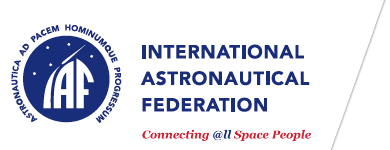Technical programme
IAC-17 — 68th International Astronautical Congress
A2. MICROGRAVITY SCIENCES AND PROCESSES SYMPOSIUM
The objective of the Microgravity Science and Processes Symposium is to highlight and discuss the state of the art in microgravity (reduced-gravity) physical sciences and processes, as well as to prepare for future orbital infrastructure. Session topics cover all microgravity science disciplines (material science, fluid physics, combustion science, fundamental physics), current results and research perspectives, together with relevant technology developments.
- Coordinator
Nickolay N. Smirnov
Lomonosov Moscow State University — Russian Federation
- Secretary
Anastassiia Nikonova
Russian Academy of Sciences — Russian Federation
- Vice-Coordinator
Gabriel Pont
Centre National d'Etudes Spatiales (CNES) — France
A2.1. Gravity and Fundamental Physics
This session is devoted to the search of new fields of research in condensed matter physics and gravitational physics including cryogenic fluids, critical fluids, equivalence principle, atomic clock and plasma crystals.
- Co-Chair
Hanns Selig
Geradts Gmbh — GermanyAntonio Viviani
Università degli Studi della Campania "Luigi Vanvitelli" — Italy
- Rapporteur
Qi Kang
National Microgravity Laboratory, Institute of Mechanics, Chinese Academy of Sciences. — China
A2.2. Fluid and Materials Sciences
The main focus of the session is on perspective research fields in fluid and materials sciences, multi-phase and chemically reacting flows including theoretical modelling, numerical simulations, and results of pathfinder laboratory and space experiments.
- Co-Chair
Nickolay N. Smirnov
Lomonosov Moscow State University — Russian FederationSatoshi Matsumoto
Japan Aerospace Exploration Agency (JAXA) — Japan
- Rapporteur
Thomas Driebe
DLR (German Aerospace Center) — Germany
A2.3. Microgravity Experiments from Sub-Orbital to Orbital Platforms
This session presents recent results of microgravity experiments from all disciplines using different microgravity platforms, including drop towers, parabolic aircrafts, sounding rockets and capsules.
- Co-Chair
Raffaele Savino
University of Naples "Federico II" — ItalyRainer Willnecker
Deutsches Zentrum für Luft- und Raumfahrt e.V. (DLR) — Germany
- Rapporteur
Peter Hofmann
OHB System AG - Munich — Germany
A2.4. Science Results from Ground Based Research
This session is focused on the results of ground based preparatory experiments from all disciplines.
- Co-Chair
Valentina Shevtsova
University of Mondragon — SpainAntonio Viviani
Università degli Studi della Campania "Luigi Vanvitelli" — Italy
- Rapporteur
Nickolay N. Smirnov
Lomonosov Moscow State University — Russian Federation
A2.5. Facilities and Operations of Microgravity Experiments
This session is devoted to new diagnosis developments, new instruments definition and concepts for the future, ground and flight operation (telescience, robotics, hardware & software).
- Co-Chair
Rainer Willnecker
Deutsches Zentrum für Luft- und Raumfahrt e.V. (DLR) — GermanyGabriel Pont
Centre National d'Etudes Spatiales (CNES) — France
- Rapporteur
Satoshi Matsumoto
Japan Aerospace Exploration Agency (JAXA) — Japan
A2.6. Microgravity Sciences Onboard the International Space Station and Beyond - Part 1
Aimed at the presentation of results obtained from large orbital platforms, in particular the ISS, as well as preparation scenarios for further long term flight opportunities, this session includes description and performance of ground and in-orbit infrastructures.
- Co-Chair
Bernard Zappoli
Centre National d'Etudes Spatiales (CNES) — FrancePeter Hofmann
OHB System AG - Munich — Germany
- Rapporteur
Angelika Diefenbach
Deutsches Zentrum für Luft- und Raumfahrt e.V. (DLR) — Germany
A2.7. Microgravity Sciences Onboard the International Space Station and Beyond - Part 2
Aimed at the presentation of results obtained from large orbital platforms, in particular the ISS, as well as preparation scenarios for further long term flight opportunities, this session includes description and performance of ground and in-orbit infrastructures.
- Co-Chair
Angelika Diefenbach
Deutsches Zentrum für Luft- und Raumfahrt e.V. (DLR) — GermanyCora S. Thiel
Otto von Guericke University of Magdeburg — GermanyPeter Graef
Deutsches Zentrum für Luft- und Raumfahrt e.V. (DLR) — GermanySatoshi Matsumoto
Japan Aerospace Exploration Agency (JAXA) — Japan
A2.IP. Interactive Presentations
This session offers a unique opportunity to deliver your key messages in an interactive presentation on any of the subjects of Microgravity Sciences and Processes addressed in the classic Sessions. The presentation will be displayed on a digital screen in a dedicated location and available for view by all Congress attendees for the entire Congress week. In addition, one afternoon is dedicated exclusively for the attendees to view the Interactive Presentations, and the author will be assigned a specific eight minute slot to personally present the topic and interact with the attendees present. The Interactive Presentation may take advantage of all electronic display capabilities, such as: PowerPoint charts, embedded hot links, pictures, audio and video clips etc. An award will also be presented to the author of the best Interactive Presentation in the A Category at a special ceremony. An Abstract that follows the standard format must be submitted by the deadline for standard IAC abstracts.
- Co-Chair
Gabriel Pont
Centre National d'Etudes Spatiales (CNES) — FranceQi Kang
National Microgravity Laboratory, Institute of Mechanics, Chinese Academy of Sciences. — China
